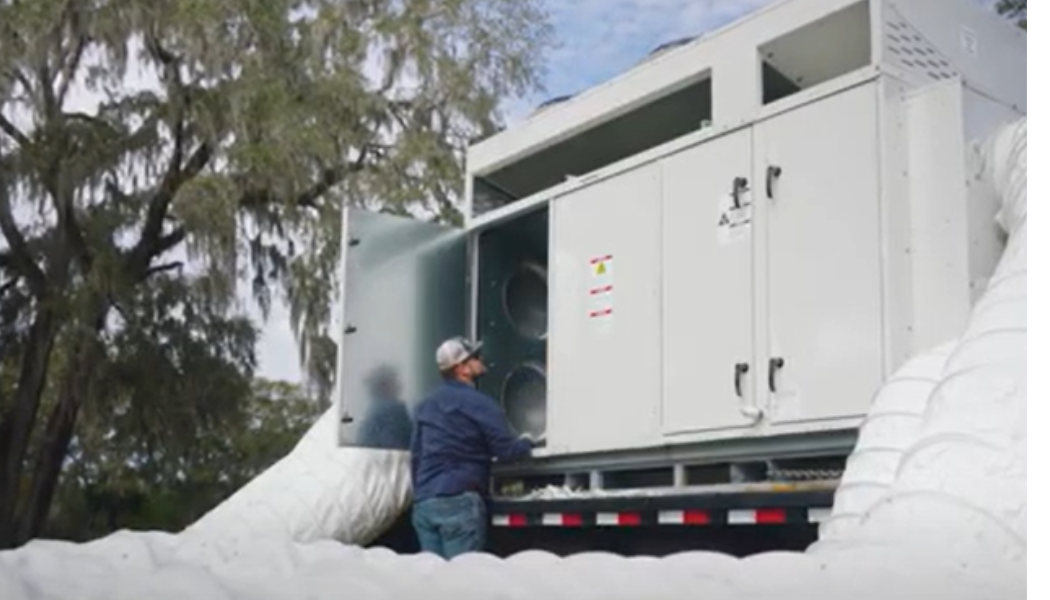How Soon Should You Prepare for a Storm That May Impact Your Business?
Why Early Preparation Matters
How Soon Should You Prepare for a Storm That May Impact Your Business?
When a storm is predicted to be in the path of your business, it’s crucial to consider how and when you should begin preparations, even if the storm’s exact trajectory is uncertain. The potential impact on your operations can be significant, so it’s essential to take proactive steps to safeguard your business. Here’s how to prepare effectively, how soon you should start, and additional measures you should consider to be fully prepared.
Why Early Preparation Matters
Storms, especially hurricanes, can be unpredictable. A storm that seems like a minor threat one day can escalate quickly and change course, catching businesses off guard. Waiting until the last minute to prepare could leave you scrambling to protect your assets, employees, and operations. Early preparation allows you to respond calmly and effectively, ensuring your business can withstand whatever comes its way.
When Should You Start Preparing?
1. Monitor Weather Reports Regularly:
As a business owner or manager, keep a close eye on weather forecasts, especially during storm season. As soon as a storm is mentioned as a potential threat, start monitoring updates closely. This awareness is your first step in preparation.
2. Seven Days Before Potential Impact:
When a storm is first identified as a possible threat (typically a week out), begin reviewing your business continuity plan. Ensure all employees are aware of their roles and responsibilities. Confirm that all necessary supplies, such as backup generators, portable HVAC units, emergency kits, and additional essentials like fuel, food, water, and first-aid supplies, are available and in working order.
3. Five Days Before Potential Impact:
Start securing your physical premises. Reinforce windows, doors, and other entry points. If you have outdoor equipment or furniture, bring it indoors or secure it properly. Ensure that your data and important documents are backed up and stored securely, both physically and digitally. Additionally, you should assess your communication systems to ensure they are ready for potential disruptions.
4. Three Days Before Potential Impact:
If your business remains in the storm's potential impact zone, it’s time to fully activate your business continuity plan. Confirm that all employee contact information is up-to-date and that everyone knows the protocol if the storm intensifies. Consider implementing remote work options if possible, and start moving critical operations to safer locations if needed. Also, test all emergency equipment, such as generators and backup power systems, to ensure they are operational.
5. 24-48 Hours Before Potential Impact:
At this stage, you should be in full preparation mode. Finalize securing your building, double-check that all emergency equipment is ready for use, and ensure your power generation and HVAC systems are ready to be deployed. Communicate with your employees about final steps and any changes to work schedules. Additionally, have a plan in place for post-storm recovery, including how to assess damage and resume operations quickly.
What Should Your Preparation Include?
1. Emergency Equipment:
Ensure your business has the necessary equipment, such as generators, portable HVAC units, and backup power sources, ready to go. In addition, stock up on extra fuel, batteries, and other essentials to ensure these systems can run for extended periods if needed.
2. Business Continuity Plan:
A well-developed business continuity plan is essential. This plan should include clear instructions on what to do before, during, and after a storm. It should also outline roles and responsibilities for all employees, include a communication strategy, and provide guidance on how to access critical data and resources remotely.
3. Secure the Premises:
Reinforce windows, doors, and other vulnerable entry points. Secure outdoor equipment and furniture to prevent damage or loss. Ensure all important documents and data are backed up and stored securely. Additionally, check your building’s drainage systems and make sure they are clear to prevent flooding.
4. Communication Plan:
Maintain clear and open lines of communication with your employees, clients, and suppliers. Let them know your business's status and any changes to operations. Use multiple channels, such as email, text, and social media, to keep everyone informed. Consider setting up a hotline or online portal where employees and clients can get updates.
5. Stock Up on Essentials:
Beyond emergency equipment, ensure your business is stocked with essential supplies. This includes fuel for generators, non-perishable food, water, first-aid kits, and other emergency supplies that might be needed during and after the storm.
6. Review and Adjust:
After the storm passes, review your preparation efforts. Evaluate what worked well and what could be improved. This will help you refine your business continuity plan for future events. Additionally, conduct a thorough assessment of any damage and ensure that your insurance claims are filed promptly.
Conclusion
Preparation is key to minimizing the impact of a storm on your business. The earlier you start, the more time you have to ensure that all aspects of your operations are secured. While it may be tempting to wait and see if the storm will change course, the cost of being unprepared can be far greater. Start your preparations as soon as a potential threat is identified, and stay vigilant throughout the storm season. Your proactive approach, combined with thorough planning and adequate resources, will help protect your business, your employees, and your bottom line.










